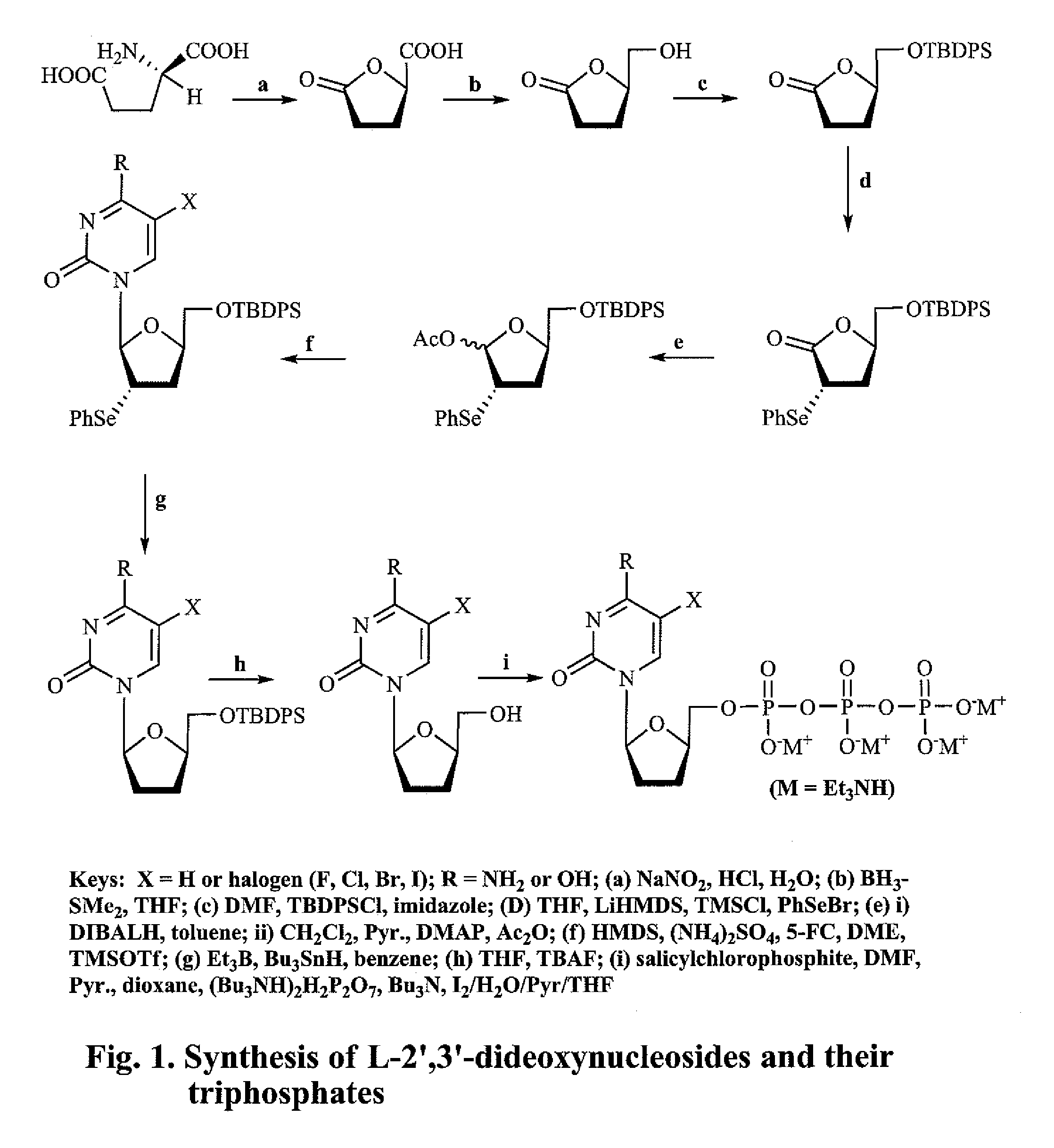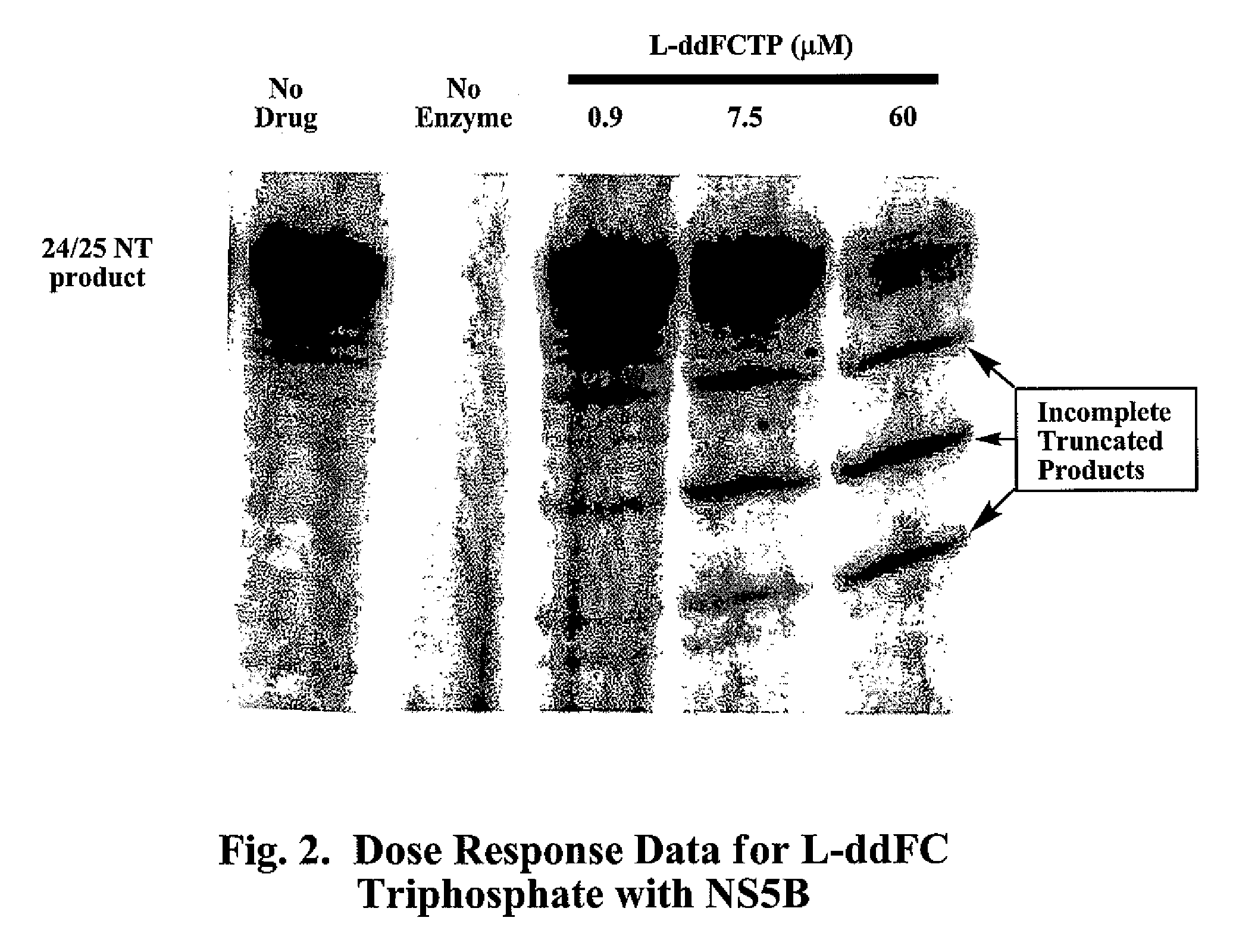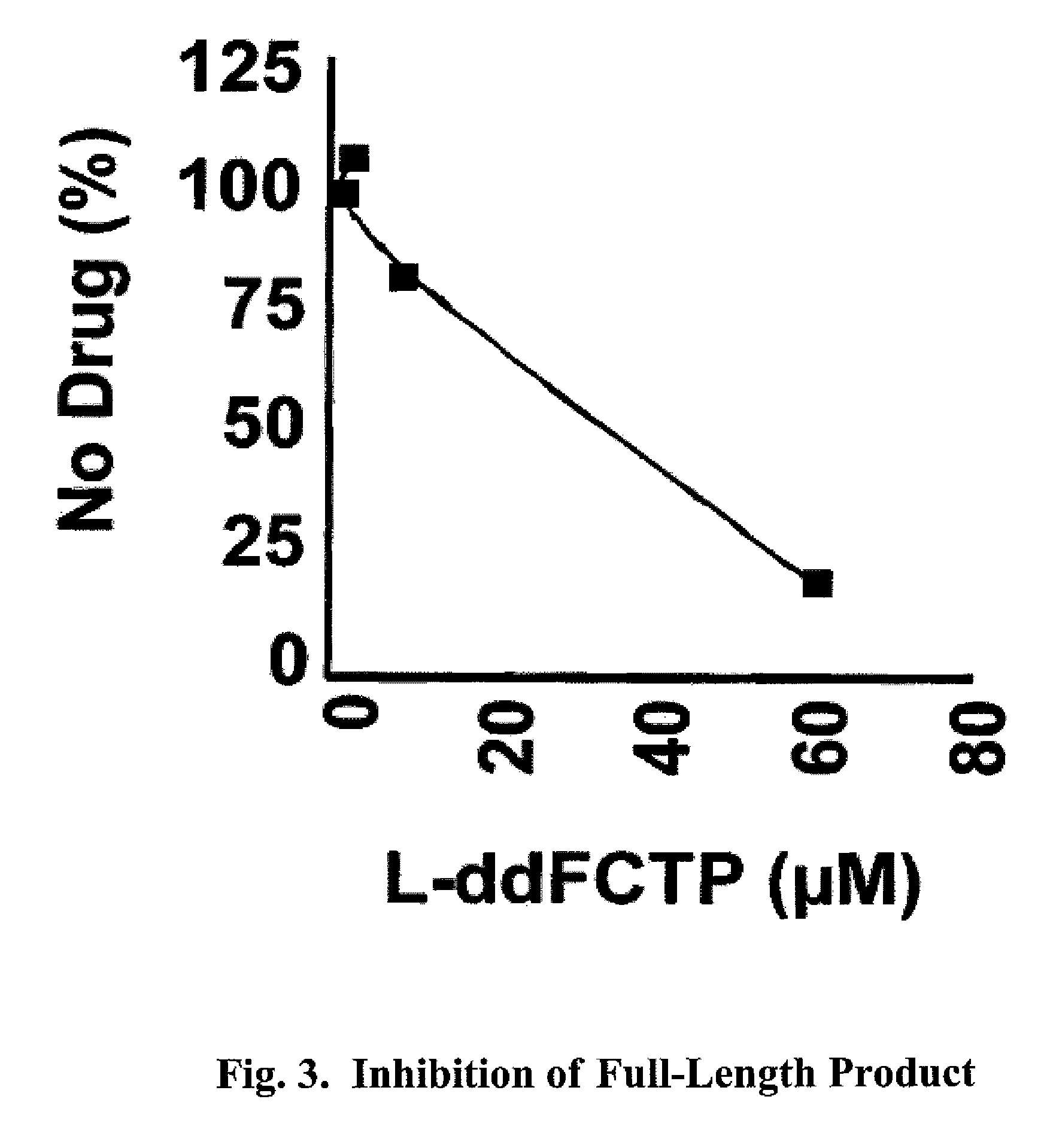2′,3′-dideoxynucleoside analogues for the treatment or prevention of Flaviviridae infections
a technology of nucleosides and analogues, which is applied in the direction of biocide, drug composition, peptide/protein ingredients, etc., can solve the problems of severe flu-like symptoms, weight loss, and inability to effectively reduce viral rna levels with ribavirin alone, so as to reduce the biological activity and reduce the biological activity
- Summary
- Abstract
- Description
- Claims
- Application Information
AI Technical Summary
Benefits of technology
Problems solved by technology
Method used
Image
Examples
example 1
(R)-(−)-5-Oxo-2-tetrahydrofurancarboxylic acid (2)
[0208]To a mixture of D-glutamic acid (1, 25 g, 170 mmol) in water (67 mL) and conc. HCl (35 mL) at 0° C. with stirring was added a solution of NaNO2 (17.5 g, 253.6 mmol) in water (37.5 mL) over a period of 4 h, and then the resulting clear solution was stirred at room temperature overnight. After removal of the solvent by evaporation in vacuo, the residue was treated with EtOAC (80 mL) and filtered. The filtrate was dried over Na2SO4, and concentrated. The residue, after crystallization from EtOAc / benzene / hexane, afforded the title compound 2 as a white crystalline solid (12.63 g, 57%). M.P. 71-73° C.; 1H NMR (400 MHz, CD3OD) δ 4.20 (m, 1H, CHO), 1.8-2.3 (m, 4H, CH2CH2).
example 2
(R)-(−)-Dihydro-5-(hydroxymethyl)-2(3H)-furanone (3)
[0209]To a solution of 2 (10 g, 76.85 mmol) in anhydrous THF (200 mL) at 0° C. was slowly added BH3—SMe2 (2 M solution in THF, 46.1 mL, 92.2 mmol) over a period of 10 min. The reaction solution was stirred at 0° C. for 3 h under nitrogen, followed by the slow addition of anhydrous MeOH (20 mL). After removal of the solvent, the residue was purified by flash chromatography on silica gel, eluting with CH2Cl2 / MeOH (95:5) to give the title compound 3 as a colorless oil (8.52 g, 95%). 1H NMR (CDCl3) δ 4.66-4.65 (m, 1H, H-5), 3.95-3.91 (m, 1H, CH2OH), 3.72-3.65 (m, 1H, CH2OH), 2.65-2.57 (m, 2H, H-3), 2.30-2.17 (m, 3H, H-4, OH).
example 3
(R)-5-[(tert-Butyldiphenylsilyl)hydroxymethyl]-dihydro-2(3H)-furanone (4)
[0210]To a solution of 3 (7.0 g, 60 mmol) and imidazole (9.19 g, 135 mmol) in anhydrous DMF (70 mL) was added tert-butyldiphenylsilyl chloride (18.14 g, 66 mmol, 17.2 mL), and the solution was stirred at room temperature under nitrogen atmosphere for 1 h. After removal of the solvent by evaporation, the residue was dissolved in CHCl3, washed with water and brine, dried (Na2SO4), filtered, and concentrated. After crystallization from hexane, the oily residue gave the title compound 4 as a white crystalline solid (20.8 g, 98%). M.P. 76° C.; 1H NMR (CDCl3) δ 7.68-7.65 (m, 4H, arom.), 7.47-7.39 (m, 6H, arom.), 4.63-4.61 (m, 1H, H-5), 3.90-3.87 (dd, J=3 & 11 Hz, 1H, CH2OH), 3.70-3.67 (dd, J=3 & 11 Hz, 1H, CH2OH), 2.69-2.65 (m, 1H, H-3), 2.56-2.52 (m, 1H, H-3), 2.32-2.23 (m, 2H, H-4), 1.06 (s, 9H, t-Bu).
PUM
 Login to View More
Login to View More Abstract
Description
Claims
Application Information
 Login to View More
Login to View More - R&D
- Intellectual Property
- Life Sciences
- Materials
- Tech Scout
- Unparalleled Data Quality
- Higher Quality Content
- 60% Fewer Hallucinations
Browse by: Latest US Patents, China's latest patents, Technical Efficacy Thesaurus, Application Domain, Technology Topic, Popular Technical Reports.
© 2025 PatSnap. All rights reserved.Legal|Privacy policy|Modern Slavery Act Transparency Statement|Sitemap|About US| Contact US: help@patsnap.com



